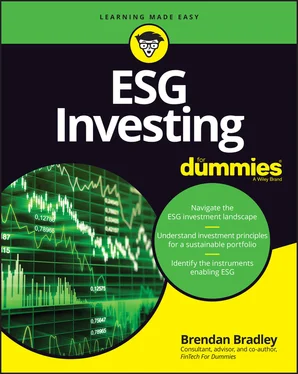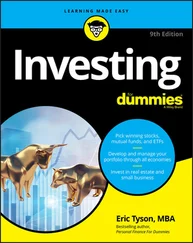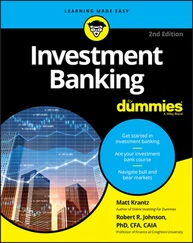The idea here is to provide a pragmatic look at the most important aspects of ESG investing and highlight that this approach to responsible investment can help companies provide strong returns while helping to make the world a better place.
A quick note: Sidebars (shaded boxes of text) dig into the details of a given topic, but they aren’t crucial to understanding it. Feel free to read them or skip them. You can also pass over the text accompanied by the Technical Stuff icon. The text accompanied by this icon offers some interesting but non-essential information about ESG investing.
One last thing: Within this book, you may note that some web addresses break across two lines of text. If you’re reading this book in print and want to visit one of these web pages, simply type in the web address exactly as it appears in the text, pretending the line break doesn’t exist. If you’re reading this as an e-book, you’ve got it easy — just click the web address to go directly to the web page.
I wrote this book so that all investors can understand it, but I assumed a specific type of audience. I considered the following readers:
Financial service professionals who want to educate themselves about ESG and sustainability, instead of bluffing their way through
Active investors who are considering increasing their asset allocation toward ESG criteria
Asset owners who are relatively new to the concept and need to understand the nuances
Company executives who recognize the need to “up their game” to improve their ESG score and ensure that their company is deemed suitable for ESG indexes and portfolios
Professional service providers, such as accountants, consultants, and lawyers, who are trying to define their places in the ESG ecosystem
Regulators, politicians, and other industry participants who are charged with safeguarding the investment community
The general assumption is that you’ll have some experience with and understanding of traditional investment, but you can build your ESG understanding as you progress through this book or dive into certain chapters that are more specific to your role or interest.
Like all For Dummies books, this book features icons to help you navigate the information. Here’s what they mean.
 This icon highlights especially helpful advice about getting started with ESG investing.
This icon highlights especially helpful advice about getting started with ESG investing.
 If you take away anything from this book, it should be the information marked with this icon.
If you take away anything from this book, it should be the information marked with this icon.
 This icon points out situations and actions to avoid in the world of ESG investing.
This icon points out situations and actions to avoid in the world of ESG investing.
 This icon flags information that delves a little deeper than usual into a particular ESG investing topic.
This icon flags information that delves a little deeper than usual into a particular ESG investing topic.
In addition to what you’re reading right now, this book also comes with a free access-anywhere Cheat Sheet that provides a mini-glossary of important ESG terms and an overview of the key topics that are driving ESG investing. To get this Cheat Sheet, simply go to www.dummies.com and search for “ESG Investing For Dummies Cheat Sheet” in the Search box.
You don’t have to read this book in strict chapter-driven order. Each chapter is self-contained, so you can jump around as much as you like. Flip to the table of contents and the index if you’re looking for a specific topic. If you want to find out more about ESG and keep up to date on the latest developments, you should check out the following objective websites:
Principles for Responsible Investment: www.unpri.org/sustainability-issues
United Nation Sustainable Development Goals: www.un.org/sustainabledevelopment/sustainable-development-goals/
Sustainability Accounting Standards Board: www.sasb.org/standards-overview/materiality-map/
Global Reporting Initiative: www.globalreporting.org/how-to-use-the-gri-standards/
Task Force on Climate-related Financial Disclosures: www.fsb-tcfd.org/about/
ESG Clarity: www.esgclarity.com/
Part 1
IN THIS PART …
Discover how ESG investing isn’t to be confused with socially responsible, ethical, or impact investing.
Understand what has driven the evolution and major growth in ESG investing in recent years.
Run through the reasons why ESG is important, what the criteria for ESG ratings and metrics are, and what a company needs to do to enhance its ESG score.
Investigate the key material indicators and risks for each aspect of ESG: environmental, social, and governance.
Identify concerns around “greenwashing,” given the surge in ESG investments.
Chapter 1
Entering the World of ESG Investing
IN THIS CHAPTER
 Introducing the basic features of the ESG landscape
Introducing the basic features of the ESG landscape
 Defining what ESG is and isn’t
Defining what ESG is and isn’t
 Looking at ESG’s effects on the environment, society, and governance
Looking at ESG’s effects on the environment, society, and governance
 Using international norms to figure out ESG goals
Using international norms to figure out ESG goals
The acronym ESG has undoubtedly become one of the hottest topics in investment management in recent years. Google searches for the term “ESG investing” have grown exponentially in the last three years, so it’s certainly caught people’s attention! (Don’t believe me? Just look at Figure 1-1.) As a result, executive management has a range of new stewardship topics to contend with, now that global warming issues have created ‘E’nvironmental concerns, and the COVID-19 pandemic has further highlighted ‘S’ocial issues. (Corporate ‘G’overnance issues have always been closely monitored by the investment community.)
But what’s all the fuss about? Is ESG investing a passing fad or a long-term trend that will dominate investment management for the foreseeable future? This chapter looks at the fundamentals behind ESG investing, highlights some of the key drivers behind it, and identifies some of the goals and standards that have been established.

© John Wiley & Sons, Inc.
FIGURE 1-1:Google Trends chart — a search for “ESG Investing” over the last three years.
Surveying the Current ESG Landscape
Broadly defined as the analysis of a company’s environmental, social, and governance practices, ESG first grabbed the financial world’s attention following a 2005 United Nations Global Compact report, which claimed that incorporating ESG factors into capital markets would make it possible to “do well by doing good.” Since then, the significance of ESG issues has experienced a meteoric rise. The Principles for Responsible Investment (PRI) network of investors, which was introduced in 2006, has grown from 63 asset manager and owner signatories with US$6.5 trillion in assets under management to more than 3,000 signatories with over US$103 trillion in assets under management. Driven by increased stakeholder attention to corporate environmental impacts and investors realizing that strong ESG performance can safeguard a company’s success, ESG is no longer a niche investment concept.
Читать дальше

 This icon highlights especially helpful advice about getting started with ESG investing.
This icon highlights especially helpful advice about getting started with ESG investing. If you take away anything from this book, it should be the information marked with this icon.
If you take away anything from this book, it should be the information marked with this icon. This icon points out situations and actions to avoid in the world of ESG investing.
This icon points out situations and actions to avoid in the world of ESG investing. This icon flags information that delves a little deeper than usual into a particular ESG investing topic.
This icon flags information that delves a little deeper than usual into a particular ESG investing topic. Introducing the basic features of the ESG landscape
Introducing the basic features of the ESG landscape











